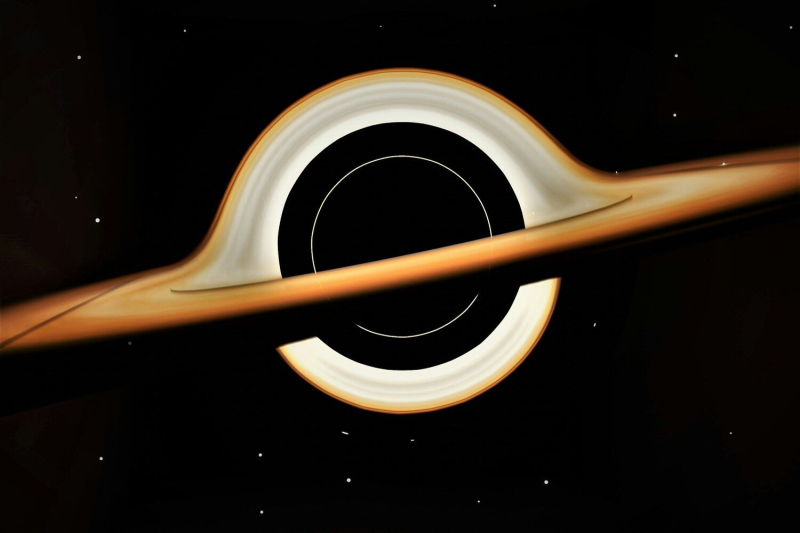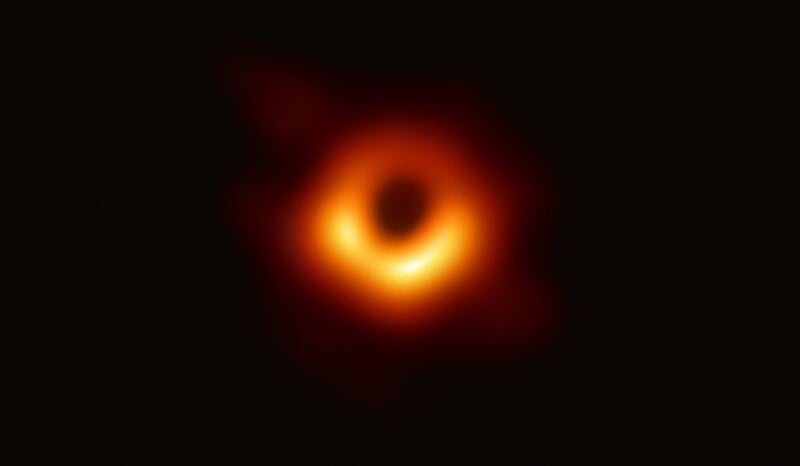
© Aman Pal/Unsplash
A black hole is an object in space so dense that nothing can escape its gravity. All matter is attracted to it, and even light cannot escape. It continues to compress until it becomes an extremely small and dense point called a singularity. Around this point, an invisible zone is formed called l’event horizon, where everything that goes in can no longer come out. This horizon is both its surface and a point of no return according to the definition given by Futura Sciences.
These cosmic entities were mentioned as early as the 18th century by John Michell and Pierre-Simon Laplace, well before modern physics gave a theoretical basis to these concepts. These were not scientifically recognized until much later, in the 20th century, thanks to the work of several physicists. Among these, John Wheeler is an American physicist who popularized the term “black hole” in 1967, rooting the concept in scientific culture.
Understanding black holes
L’ study of black holes took a decisive turn thanks to the work of Subrahmanyan Chandrasekhar, Indian physicist and mathematician and winner of the 1983 Nobel Prize in Physics. Armed with the principles of general relativity (formulated by Albert Einstein), he was the first to shed light on the process of formation of black holes.
It all starts from the moment when the heart of a massive star (about eight times the size of Sun) s’collapses under the effect of its own gravity after having exhausted all of its nuclear fuel. This process of gravitational collapse can occur very quickly on a cosmic time scale, sometimes even within seconds. The latter then creates an extreme concentration of mass in an infinitely small volume. Gravity is so strong that nothing can escape: a black hole is born.
What would happen if you fell inside a black hole? Well the question still remains unanswered, we don't ;we don’t know. To an outside observer, all information about what is happening inside the black hole is lost. The latter has such a strong mass that it distorts matter and even time.
According to our current knowledge, it is very likely that’ a person falling inside a black hole would be completely stretched and then shredded into elementary particles, which themselves would contribute to increasing the mass of the black hole. A theoretical process known as spaghettification, which is “ vertical stretching occurring when objects cross extreme gravitational fields ” according to the definition given by Brice Louvet for the Sciencepost site.
However, the YouTube channel Stargaze produced a visual simulation showing in first person view if one fell into a black hole. It's pretty scary, as you can see below.
Subscribe to Lemon Squeezer
Observing the invisible
By nature, black holes are invisible, which is an important paradox for astronomers : how to study what cannot be seen ? Rather than directly observing a black hole, we observe their gravitational influence on their environment. Thanks to specialized telescopes, it is possible to observe the high-energy radiation that occurs when matter (gas, stars, cosmic dust) approaches a black hole.
Black holes are classified into several categories according to their mass. Stellar black holes are formed by the gravitational collapse of massive stars and weigh at least three times the mass of the Sun. Supermassive black holes, for their part, weigh several million, even billions of times the mass of our star. Our galaxy contains one, Sagittarius A*, photographed for the first time in 2022.
In April 2019, the Event Horizon Telescope (EHT) project made it possible to the first time in our history to visualize a direct image of a black hole, called M87*, which can be admired in the photo below.

© ESO
The mass of intermediate black holes, another type, is between 10 and 10,000 solar masses. This category is still the subject of debate within the scientific community regarding their real existence. Other categories also exist: the primordials (born during the Big Bang) and the dormant< /strong>, which are a bit different since they are not really a type of black hole, but rather a stateevolving over time.
Since the first theoretical speculations three centuries ago, the study of black holes has today become a area of rigorous scientific investigation. These cosmic objects are far from being simple curiosities, but today represent an essential field; a unique experimental ground to test the limits of our theories of gravity and quantum mechanics. They are also exceptional natural laboratories for understanding more about how space and time are woven together. Their unique physics also provides us with extremely important clues about the conditions of the Universe, shortly after the Big Bang.
- Black holes are celestial objects born from the death of a star and endowed with a titanic gravitational force.
- We suspected their existence in 18th century already, but only the scientific advances of the 20th allowed an in-depth understanding of their nature.
- Currently, they are very important objects of study for the scientific community.
📍 To not miss any news from Presse-citron, follow us on Google News and WhatsApp.
[ ]

